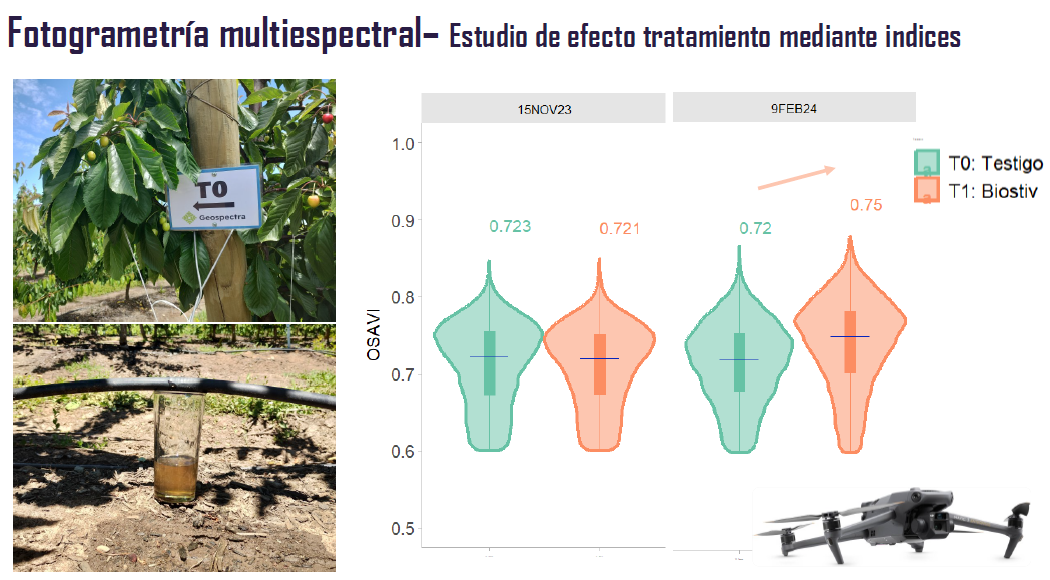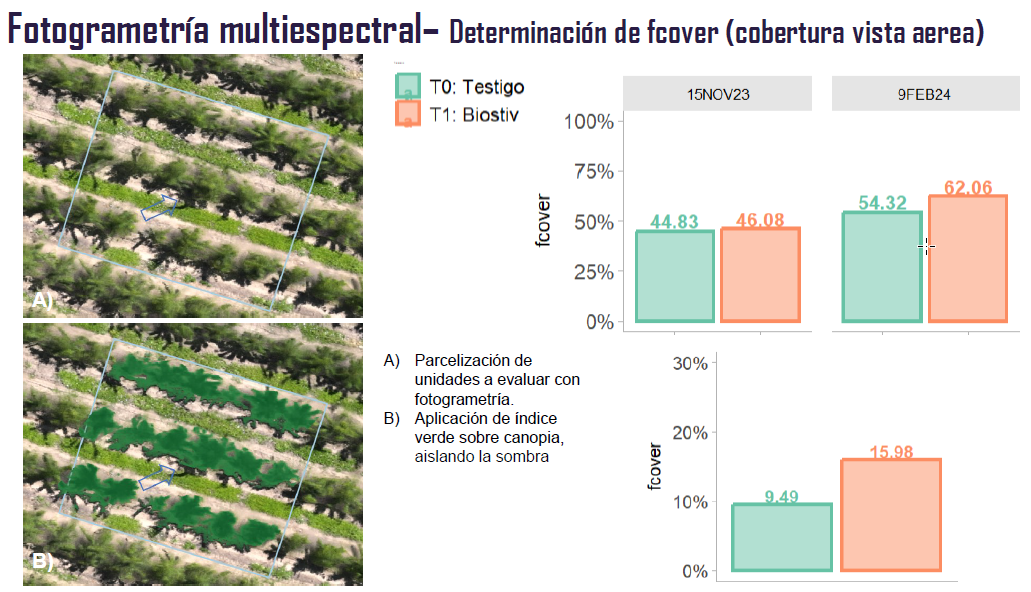One of the driving forces behind the establishment of Geospectra was the need to integrate technology and artificial intelligence into the agricultural industry, both in the area of production and in research and development (R&D).
This led the company to study and understand these tools, their potential and their limitations. We believe it was a wise decision, supported by the positive reception from various players in the agricultural sector. For this reason, we firmly believe in the crucial role of Agtech companies in the current and future context.
In the context of R&D, the incorporation of remote sensing (distance measurement with sensors) as an integral variable has been remarkable and decisive in the evaluation of product or management trials. The wealth of information available, combined with programming and geostatistics, allows for a precise assessment of the effectiveness of treatments and programs.
 Image 1.
Image 1.
An example of this is a trial (DBCA with 5 replicates) conducted on cherry trees, where the biostimulant Biostiv (Point) based on amino acids (total and free) and organic acids (humic and fulvic) was tested. With a couple of applications through an irrigation system during the flowering period of the roots, at a dose of 5 L/ha, significant effects were obtained, assessed both in the field and with geomatic tools (soil information study).
In particular, statistical differences were found in the number of fine roots (less than 2 mm), with a resulting difference in the root index, as well as positive trends in leaf nutrition, particularly regarding calcium (Ca), magnesium (Mg), and zinc (Zn).
The soil analyses showed positive trends with respect to the treatment for the same nutrients. Geostatistics contributed significantly, as the vegetative indices related to vigor, such as NDVI and OSAVI, showed a plausible improvement with Biostiv. Similarly, the green intensity index MCARI also showed improvement, indicating an increase in the leaf area index (LAI) and green intensity.
 Image 3.
Image 3.
In addition, fcover - projection of the canopy in a perpendicular aerial view - was calculated, showing a 6.49% increase in the second flight, equivalent to 649 m²/ha of photosynthetically active canopy, thanks to the application of Biostiv. These results, supported by a large amount of data, show us the contribution that geomatic tools can make in evaluating the effect of products or management.
Today we have a large amount of information available and, thanks to geostatistics and artificial intelligence, we can precisely assess the effectiveness of treatments and programs. We hope that R&D companies and Agtech will continue to grow and that the sector will open up to these developments, which aim to sustainably improve productivity.
Source: Geospectra
Images: Geospectra
José Salinas Navarrete, Geospectra Agtech Chile
Ingeniero Agrónomo, Geospectra
www.geospectra.cl
Cherry Times - All rights reserved














